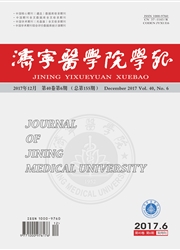

 中文摘要:
中文摘要:
G蛋白偶联受体(G-protein-coupled receptors,GPCRs)能以同源或异源二聚体,甚至是高阶寡聚体的形式存在,这些形式有不同于单体的特异功能特征,例如生物合成、配体连接、脱敏、内化和降解,因此成为备受关注的药物设计靶点。而对GPCRs这些寡聚体形式进行药物设计首要的任务是要确定这些受体之间能否形成寡聚体。因此,本文将全面介绍用于研究GPCRs寡聚化的生物化学和生物物理方法。
 英文摘要:
英文摘要:
G-protein-coupled receptors(GPCRs)can exist as homo-or hetero-dimers or even high-order oligomers,which exhibit "specific" functional properties distinct from monomeric receptors,involving agonist recognition,signaling,trafficking,and so on.GPCR oligomers open a completely new field in the search for novel drug targets useful to combat a variety of diseases with potentially fewer side effects.But the top priority is the determination that oligomerization takes place between particular receptors.This review aims at presenting biochemical and biophysical methods for GPCR oligomers.
 同期刊论文项目
同期刊论文项目
 同项目期刊论文
同项目期刊论文
 D-beta-Hydroxybutyrate inhibited the apoptosis of PC12 cells induced by H2O2 via inhibiting oxidativ
D-beta-Hydroxybutyrate inhibited the apoptosis of PC12 cells induced by H2O2 via inhibiting oxidativ 期刊信息
期刊信息
